- Over 1 million successful rentals
Car Hire Turks and Caicos Islands
Save time and money. We compare the offers of car rental companies in Turks and Caicos Islands on your behalf.
- Free cancellation Up to 48 hours prior to the scheduled pick up time
- Best price guarantee Have you found a better price? Let us know and we will make you a better offer.
- 24000+ pick-up locations Locations around the world
Compare Car Hire
Carrentals.co.uk offers simple and straightforward car hire comparison services. We don't add a penny to your quotes!
Car rental offers in Turks and Caicos Islands
Whether you're looking for a small rental car or a station wagon for the entire family, we will always have a suitable vehicle for the lowest price. Below are some examples from our selection in Turks and Caicos Islands.
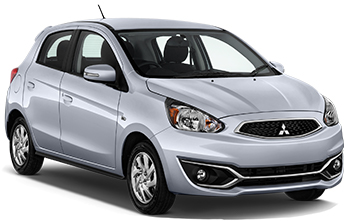
-
Sixt From£ 62 /day

-
Sixt From£ 67 /day
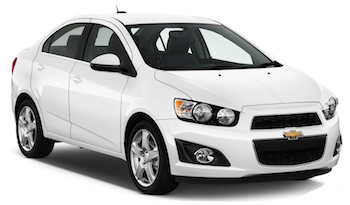
-
Sixt From£ 67 /day

-
Sixt From£ 71 /day
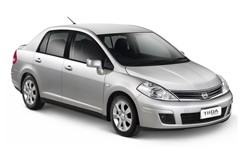
-
Sixt From£ 74 /day

-
Sixt From£ 78 /day

-
Sixt From£ 128 /day

-
Sixt From£ 115 /day

-
Sixt From£ 123 /day

-
Sixt From£ 128 /day

-
Sixt From£ 242 /day

-
Sixt From£ 246 /day
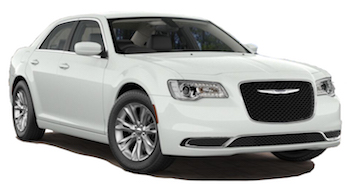
-
Sixt From£ 118 /day

-
Sixt From£ 122 /day
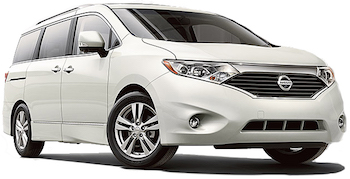
-
Sixt From£ 169 /day

-
Sixt From£ 163 /day
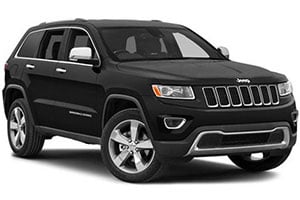
-
Sixt From£ 171 /day

-
Sixt From£ 175 /day

-
Sixt From£ 223 /day

-
Sixt From£ 227 /day

-
Sixt From£ 242 /day

-
Sixt From£ 246 /day

-
Sixt From£ 123 /day

-
Sixt From£ 115 /day

-
Sixt From£ 128 /day

-
Sixt From£ 128 /day

-
Sixt From£ 171 /day

-
Sixt From£ 175 /day

-
Sixt From£ 223 /day

-
Sixt From£ 227 /day

When to book a rental car in Turks and Caicos Islands
Turks and Caicos Islands - When is the most affordable time to rent a economy class car?
At this destination (Turks and Caicos Islands), July is the most affordable time to rent a economy class car with an average daily rate of
Turks and Caicos Islands - When is the most affordable time to rent a compact class car?
At this destination (Turks and Caicos Islands), August is the most affordable time to rent a compact class car with an average daily rate of
Turks and Caicos Islands - When is the most affordable time to rent an intermediate class car?
At this destination (Turks and Caicos Islands), July is the most affordable time to rent a intermediate class car with an average daily rate of
Turks and Caicos Islands - When is the most affordable time to rent a standard class car?
At this destination (Turks and Caicos Islands), August is the most affordable time to rent a standard class car with an average daily rate of
Turks and Caicos Islands - When is the most affordable time to rent a full-size car?
At this destination (Turks and Caicos Islands), August is the most affordable time to rent a full-size class car with an average daily rate of
Turks and Caicos Islands - When is the most affordable time to rent a luxury car?
At this destination (Turks and Caicos Islands), August is the most affordable time to rent a luxury class car with an average daily rate of
Turks and Caicos Islands - When is the most affordable time to rent a SUV?
At this destination (Turks and Caicos Islands), August is the most affordable time to rent an SUV with an average daily rate of
Turks and Caicos Islands - When is the most affordable time to rent a MPV?
At this destination (Turks and Caicos Islands), August is the most affordable time to rent an mpv with an average daily rate of
Turks and Caicos Islands - When is the most affordable time to rent a minivan?
At this destination (Turks and Caicos Islands), August is the most affordable time to rent a minibus with an average daily rate of
Car rental locations in Turks and Caicos Islands
Carrentals.co.uk compares rental car prices at the following destinations

Turks and Caicos Islands Guide
Turks and Caicos Islands is best explored by rental car. Carrentals.co.uk has over 1 pick-up locations in Turks and Caicos Islands. This means there is always a pick-up location close to your destination.
Most popular car hire locations in Turks and Caicos Islands
Driving
Turks and Caicos may not be as well known as neighbouring Caribbean countries, but it is all the better for it. Gliding under the radar means that Turks and Caicos has managed to remain a little slice of untouched paradise. The world-renowned dive site of Smith Reef and natural parks are all just a short drive away from the white sandy beaches that make this country a dream getaway destination.
Driving Tips for Turks and Caicos
The two main islands, Turk Island and Caicos Island, are the largest of the 40 islands that make up the country. Roads vary from well-maintained in the towns to dirt tracks along the coast roads. Signs are sporadic, but the islands are so small that getting lost is a virtual impossibility.
Driving licences: UK drivers are permitted to drive here with a valid UK driver’s licence.
Which side does Turks and Caicos drive on: the left.
Speed limits:
Rural areas: 40mph (65kph)
Built-up areas: 20mph (32kph)
Alcohol limits: 0.08 per cent, the same as in the UK.
Driving age: 18 years, but 21 years to rent a vehicle.
Seatbelts: although it is not the law to wear a seatbelt, seatbelts are provided in all rental cars and wearing the correct restraint is highly recommended. Child booster seats are also available at many car rental agencies on request.
Mobile phones and GPS: although it is not currently illegal to use a mobile phone while driving, it is strongly recommended that drivers use a hands-free device. As the main islands are so small, using GPS is unnecessary.
Cost of fuel in Turks and Caicos: petrol is considerably more expensive than in the UK; however, as the islands are so small, a tank of fuel lasts a long time.
Car hire and fuel payment: credit card payment is not commonly accepted at petrol stations, but paying for a rental car this way is not a problem.
Insurance: third-party insurance is included with rentals, as is liability insurance in some instances; check the rental agreement carefully.
Traffic and parking: on the whole, traffic is rarely an issue and parking is easy to find. Car parks are common at all beach resorts, in the cities and at all hotels.
Transport
Taxis
Taxis are easy to find and available on every inhabited island. Standard taxis are rare, with minivans far more common. These vehicles can be found at the airports or simply flagged down on the street. Although they are privately owned, they are clearly marked. Taxis can vary; some drivers are willing to be hired for a full day, often including their own travel guide expertise for no extra cost. Other taxis are reluctant to head to the more remote areas. Taxis are not metered so always agree a price before setting off.
Buses
There are 40 islands in the country. Unfortunately, the only one with an official bus service is Providenciales. The Gecko shuttle is privately run, but with no regular schedule. Frequency of service varies according to demand and what events are happening. Hotel desks can provide visitors with information along with either single tickets or day passes. For other islands, rental cars are the easiest way to get around.
Ferries
As a country made up of so many islands, the ferry service is understandably the main way of getting around. TCI Ferry Service takes passengers from Leeward Marina on Providenciales across to North Caicos. Ticket prices (adult) are £15.50 one way. Salt Cay Tours also runs from Grand Turk to Salt Cay. Although services on main routes run daily, there are no regular services to the more remote islands. For such journeys, a boat can be hired from the marina or there are unofficial local services that can assist travellers in moving from island to island.
Airports
There are two international airports that serve the Turks and Caicos Islands. Providenciales International Airport is the main gateway and receives flights from North America, Europe and other Caribbean islands. British Airways supplies services from the UK. A taxi from here to Grace Bay costs about £15. The other international airport is located on Grand Turk, close to the capital, Cockburn Town. The airport is called JAGS McCartney International Airport, but is more commonly known as Grand Turk International Airport. There are a host of domestic services that link the two airports with each other and with other smaller domestic facilities. Citizens of the UK and many other countries do not require a visa to enter the Turks and Caicos Islands.
Explore
Exploring Turks and Caicos
The Turks and Caicos’ main draw is the huge variety of beaches on offer. From small and secluded stretches of sand to lively and crowded beaches, there’s something to suit all preferences. However, the beach at Grace Bay is a must-visit. This stunning stretch is credited as one of the best around and is often the main reason that the country is voted in the top five when it comes to featuring the world’s best beaches.
Turks and Caicos has the most extensive national park system in the Caribbean, comprised of 33 protected areas. The system includes Chalk Sound National Park, a number of coral reefs and historical sites such as the Cheshire Hall plantation, an 18th century plantation that is now a museum.
By heading out to Long Bay visitors can see the attraction known simply as the Hole. This natural phenomenon is a sinkhole around 80 feet deep. The crater is around 40 feet wide and a sight to witness.
For those seeking wildlife, the best place to head is Little Water Cay. Also known as Iguana Island, this sanctuary for the rock iguana is also home to a number of other rare species that only reside in this country.
Weather
Turks and Caicos benefits from a warm climate all year round. From August to November, temperature readings climb to around 32ºC. However, as this is the wettest season, winter (December through April) is the peak season here. Around this time, the temperature stays at a comfortable 25ºC, with little rain. Thanks to the area being something of a hidden gem, prices tend to stay reasonable all year round.
Practical information
-
CurrencyUnited States Dollar
-
Driving directionLeft
-
LanguageEnglish
-
Popular car categoryEconomy
What most people want to know
The following questions and answers are a selection of the most popular questions. If you do not find the answer to your question, have a look at the Frequently Asked Questions page or contact us.
- Sixt
- Alamo
- Budget
- Dollar Rent a Car
- Europcar
- Hertz
- Thrifty
- Carwiz rent a car
- ACE Rent A Car
- Nextcar